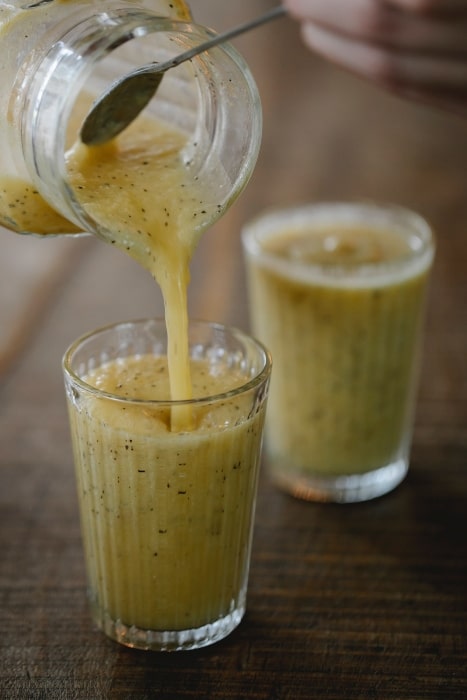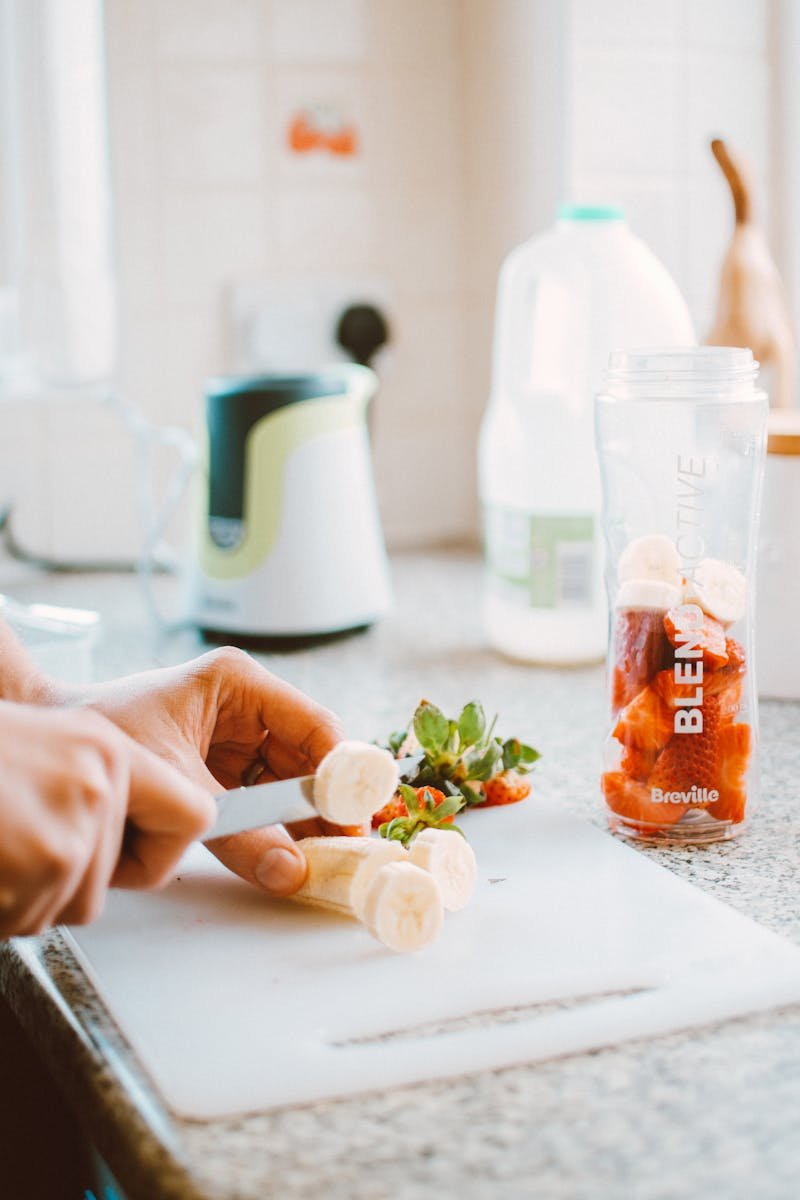Blenders are a staple in many kitchens, making everything from smoothies to soups a breeze to prepare. But what happens when you find yourself without this handy appliance, or you’re in a situation where using one isn’t possible? Whether your blender has broken down, you’re in the middle of a power outage, or you’re camping in the great outdoors, fear not! There are several alternative methods to blend ingredients without the need for an electric blender. Here at TheKitchenApplianceDad.com, we’re all about solving your kitchen dilemmas. Let’s dive into some easy solutions for blending without a blender.
For centuries, the mortar and pestle have been used to grind and blend ingredients. This tool is perfect for crushing herbs, spices, and making pastes or pesto. The technique is simple: place your ingredients in the bowl (mortar) and use the club-shaped tool (pestle) to press and crush them against the bowl’s surface. With a bit of elbow grease, you can achieve a smooth blend, especially with softer ingredients.
A food mill is a hand-operated tool that purees and strains foods. It consists of a bowl with a manually turned crank that forces food through a perforated disc, effectively blending and smoothing the texture. This tool is particularly good for making sauces, pureed soups, and baby food.
Although primarily used for mashing potatoes, a potato masher can also be used to mash other cooked vegetables and fruits. It won’t give you a silky-smooth texture, but it can work well for recipes that call for a chunkier blend.

A wire whisk can be used to blend ingredients, especially liquids. Vigorous whisking can incorporate air, blend mixtures, and even emulsify dressings. While it won’t replicate the fine puree of a blender, it’s useful for combining ingredients smoothly.
In a pinch, a fork can be used to mash and mix ingredients. This method works best with soft foods like avocados, bananas, and cooked legumes.
Place your ingredients inside a plastic bag or between two sheets of parchment paper and use a rolling pin to crush them. This is a great way to break down nuts, crackers for a pie crust, or softer fruits for a chunky puree.
For a method that requires a bit more force, place your ingredients in a heavy-duty Ziploc bag and use a mallet (or another heavy object) to crush them. Be sure to do this on a sturdy surface to avoid any damage to your countertops.
If you have a food processor, it can often serve as a stand-in for a blender. While it might not liquify ingredients as smoothly, it’s excellent for coarser blending, chopping, and pureeing.
A hand mixer isn’t just for baking. It can also be used to blend softer ingredients and mixtures. With patience, you could use it to make a chunky smoothie or to blend a soup directly in the pot.
A coffee grinder is excellent for grinding dry ingredients to a fine powder. It’s great for spices, seeds, and even small amounts of grains.
Sometimes, the best way to achieve a blended texture is to cook your ingredients until they’re soft and then use a sieve or strainer to press them through, achieving a smooth consistency. This method is particularly effective for making fruit coulis or vegetable purees.
For simple liquid blends like dressings, put your ingredients in a jar or bottle with a tight-fitting lid and shake vigorously. This can be an effective way to emulsify or combine ingredients without any equipment.
In conclusion, while a blender is a convenient and efficient tool for various kitchen tasks, there are numerous alternative methods to blend ingredients without one. From age-old tools like the mortar and pestle to innovative shaking techniques, you can still achieve the desired consistency and mix your ingredients effectively. It’s all about being resourceful and using a little elbow grease.
Whether you’re dealing with a broken appliance, a power outage, or simply looking to try something new, TheKitchenApplianceDad.com is here to guide you through your culinary challenges. Remember, sometimes the simplest tools can yield the most satisfying results, and there’s always a way to blend, mix, and mash to your heart’s content – no electricity required!

